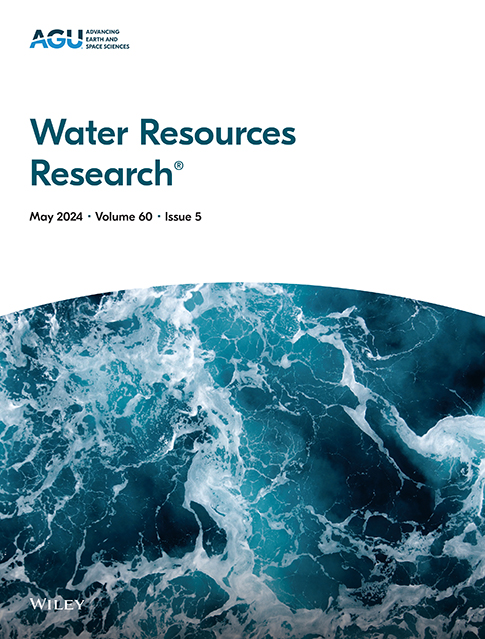洪泛区蓄水量、次级河道输送和流量对洪水波衰减的影响
IF 5
1区 地球科学
Q2 ENVIRONMENTAL SCIENCES
引用次数: 0
摘要
天然河堤的高程可以沿着河流的长度变化很大,而低洼的特征,如次级洪泛区通道,允许河流和洪泛区之间在一系列的流量上进行水文交换。这种水文“河流-洪泛区连通性”在减弱洪水波浪和将河流物质输送到洪泛区生态系统中发挥着作用。然而,洪水波的衰减和传输也受到洪泛区可用蓄水量的限制。本研究探讨了河漫滩连通性和河漫滩宽度对洪波衰减和输运的联合控制作用,以及这些控制作用如何随洪水强度的增加而变化。我们根据美国德克萨斯州三一河下游的几何形状、不同的泛滥平原宽度、峰值流量和河流与泛滥平原的连通性程度开发了理想的河流-泛滥平原模型,我们通过改变连接河流和泛滥平原的次级通道的宽度来规定这些模型。随着放电的增加,衰减从连接受限转变为存储受限。次级河道的运输可以在较低的流量下淹没洪泛区,但也可以更快地填满洪泛区,如果洪水较大,可能会导致下游的洪峰更高。较大的次级河道输送量和较宽的洪泛区增加了流向洪泛区的通量,但次级输送量使洪泛区排水更快,而较宽的洪泛区平均停留时间更长。该研究提供了一个框架,用于理解次级河道输送和洪泛区宽度如何结合起来调节横向水流交换、停留时间和洪波衰减,并可以指导河流系统的成功管理和未来的恢复工作。本文章由计算机程序翻译,如有差异,请以英文原文为准。
Flood Wave Attenuation as a Function of Floodplain Storage, Secondary Channel Conveyance, and Discharge
The elevation of natural river levees can vary considerably along the length of a river, and low-lying features such as secondary floodplain channels allow for hydrologic exchange between a river and its floodplain over a range of discharges. This hydrologic, “river-floodplain connectivity” plays a role in attenuating flood waves and transporting fluvial material to floodplain ecosystems. However, flood wave attenuation and transport are also limited by the available storage provided by floodplains. In this study, we explore the combined controls of river-floodplain connectivity and floodplain width on flood wave attenuation and transport, and how those controls change as flood magnitude increases. We develop idealized river-floodplain models based on the geometry of the lower Trinity River in Texas, USA, varying floodplain width, peak discharge, and degree of river-floodplain connectivity, which we prescribe by varying the width of a secondary channel connecting the river to the floodplain. We show that attenuation transitions from connectivity-limited to storage-limited as discharge increases. Secondary channel conveyance allows for floodplain inundation at lower discharges, but also fills the floodplain faster and, for larger floods, can cause higher flood peaks downstream. Greater secondary channel conveyance and wider floodplains increase fluxes to the floodplain, but secondary conveyance allows the floodplain to drain faster while wider floodplains have longer average residence times. This study presents a framework for understanding how secondary channel conveyance and floodplain width combine to modulate lateral flow exchange, residence times, and flood wave attenuation, and can guide successful management of river systems and future restoration efforts.
求助全文
通过发布文献求助,成功后即可免费获取论文全文。
去求助
来源期刊

Water Resources Research
环境科学-湖沼学
CiteScore
8.80
自引率
13.00%
发文量
599
审稿时长
3.5 months
期刊介绍:
Water Resources Research (WRR) is an interdisciplinary journal that focuses on hydrology and water resources. It publishes original research in the natural and social sciences of water. It emphasizes the role of water in the Earth system, including physical, chemical, biological, and ecological processes in water resources research and management, including social, policy, and public health implications. It encompasses observational, experimental, theoretical, analytical, numerical, and data-driven approaches that advance the science of water and its management. Submissions are evaluated for their novelty, accuracy, significance, and broader implications of the findings.
 求助内容:
求助内容: 应助结果提醒方式:
应助结果提醒方式:


